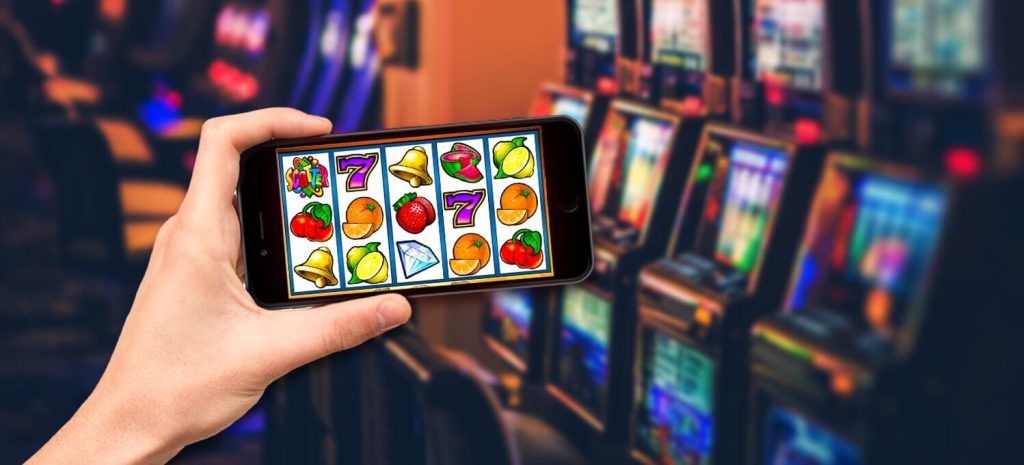
Online slots have come a long way since their inception, evolving from simple, classic machines to complex, high-tech games with cutting-edge designs and immersive features. What began as a digital version of the traditional mechanical slot machine has now transformed into a diverse and innovative gaming experience that appeals link slot gacor hari ini to a wide range of players. In this article, we’ll take a journey through the evolution of online slots, from their humble beginnings to the exciting, feature-rich designs that dominate the industry today.
In the early days of online gambling, classic slots were the primary offering, and they closely resembled the land-based slot machines found in casinos. These slots typically featured three reels and a small number of paylines, often no more than a single line running horizontally across the center of the screen. The symbols were simple and traditional, often showcasing fruits, bars, and sevens, much like the iconic designs of physical slots. While these games lacked the complexity and bonus features found in modern slots, they offered a nostalgic and straightforward gaming experience. Players could easily understand the mechanics, making them a favorite among newcomers to online gambling. Despite their simplicity, classic slots set the foundation for the online slot industry, establishing the fundamental rules and features that would evolve over time.
As technology advanced and the online gambling industry began to grow, developers started pushing the boundaries of slot design. Video slots emerged, offering enhanced graphics, multiple paylines, and interactive features. These slots featured five reels instead of the traditional three, allowing for more intricate gameplay and bigger win potential. Video slots also introduced themed games, where the slot’s design and symbols were based around specific themes, such as ancient Egypt, mythology, or fantasy. As graphics improved, developers began incorporating cinematic cutscenes, elaborate animations, and complex soundtracks that enhanced the overall gaming experience. Video slots offered far more excitement and variety compared to classic slots, and their growing popularity signaled a shift toward more dynamic, engaging games.
In the mid-2000s, the industry witnessed the rise of 3d slots, which took video slot games to an entirely new level of sophistication. With the use of advanced graphics technology, 3d slots introduced a more immersive and visually stunning gaming experience. These slots featured intricate 3d models of characters, objects, and scenes, adding depth and realism to the game. The introduction of interactive bonus rounds, where players could actively participate in mini-games or storylines, further pushed the boundaries of what was possible in slot design. 3d slots appealed to players looking for a richer, more cinematic experience and marked the beginning of an era where the visual and interactive elements of a game were just as important as the mechanics.
In recent years, cutting-edge innovations have continued to redefine the online slot landscape. One of the most significant developments has been the advent of Megaways slots, a revolutionary game mechanic created by Big Time Gaming. The Megaways engine offers players up to 117, 649 ways to win, replacing traditional paylines with a system that dynamically changes the number of symbols on each reel with every spin. This system offers unparalleled excitement and huge win potential, as each spin is unpredictable. Along with Megaways, new features like cluster pays, where wins are based on groups of matching symbols rather than a line, and cascading reels, where symbols disappear and new ones fall into place, have made online slots even more interactive and engaging. Developers are also incorporating virtual reality (VR) and augmented reality (AR) technologies into their designs, creating fully immersive slot experiences that transport players into virtual worlds. These advancements are making online slots more than just games—they are becoming interactive, immersive experiences that rival traditional video games.
Looking ahead, the future of online slots is set to be shaped by artificial intelligence (AI) and blockchain technology. AI is expected to play a significant role in personalizing player experiences, adapting gameplay based on individual preferences, and offering tailored promotions and bonuses. Blockchain, on the other hand, could bring added transparency and security to online slots, ensuring fairness in gameplay and simplifying transactions with cryptocurrencies. These emerging technologies promise to create even more dynamic, secure, and user-friendly slot experiences for players around the world. The next generation of online slots will likely be even more engaging, offering unique and customized experiences that blend gaming with cutting-edge technology.
In conclusion, the evolution of online slots has been marked by continuous innovation and an increasing focus on immersive, interactive gameplay. From the simplicity of classic slots to the dynamic, feature-rich designs of today, online slots have come a long way in terms of graphics, gameplay mechanics, and player engagement. With the introduction of new technologies like VR, AR, AI, and blockchain, the future of online slots looks brighter than ever, offering players an exciting glimpse into the next phase of online gaming. Whether you’re a fan of traditional slots or enjoy the latest high-tech offerings, the evolution of online slots continues to provide an exciting and ever-changing landscape for gamblers.
